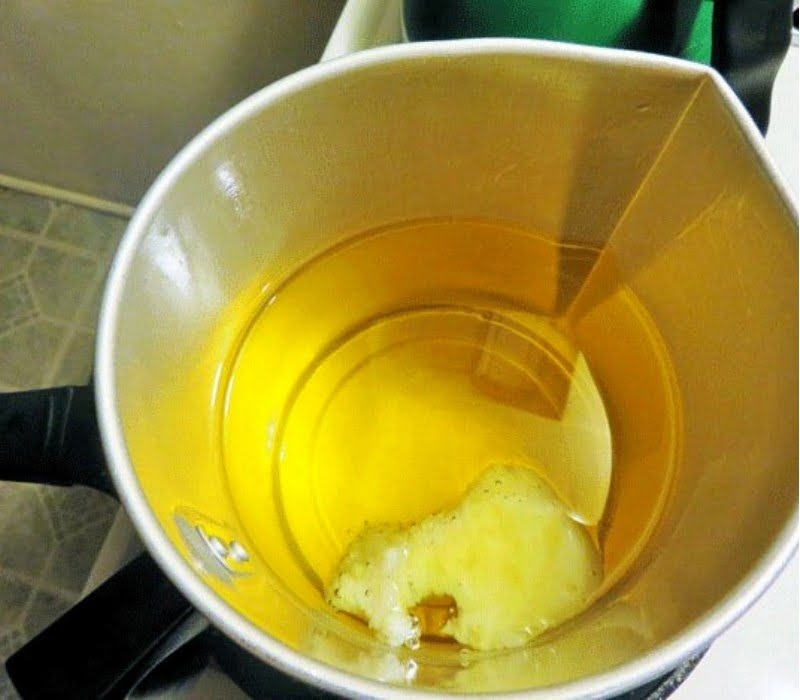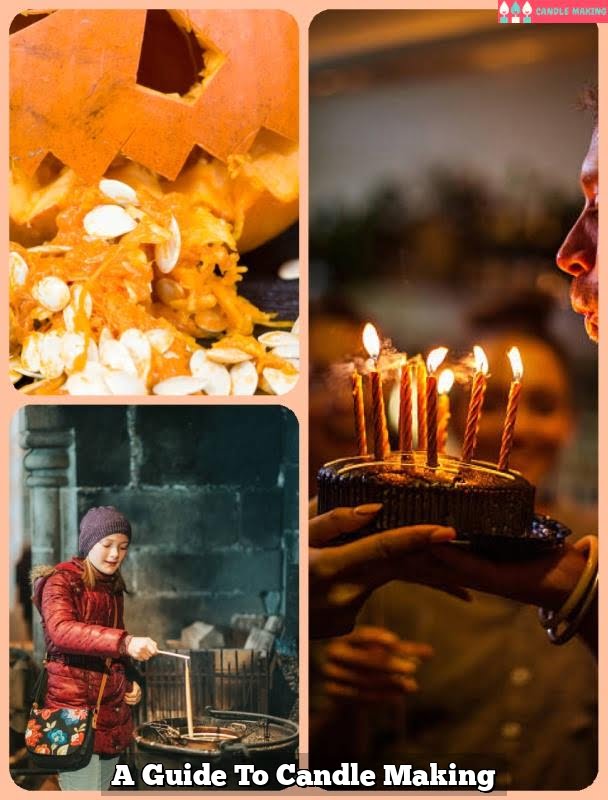Introduction Benefits of Soy Candles & Its Eco-Friendly Nature
Making your own candles from soy wax is a great hobby to get into, with many rewards. Soy candles are not only lovely to look at, but have many benefits when compared with candles made from paraffin wax. They burn for longer, typically for around 50% longer, and they burn cleaner; producing virtually no soot or smoke. This results in a cleaner environment as the allergens and pollutants found in paraffin candles can be kept out of the air you breathe.
In addition to this, soy wax is made from vegetable oils ” such as palm, coconut and soybean oil ” which makes them naturally biodegradable and therefore more eco-friendly than traditional waxes. As the wax is derived directly from plant material rather than petrochemicals like paraffin, their processing also has less environmental impact. Furthermore, soy wax burns cooler than traditional waxes meaning it is generally safer and less likely to cause accidental fires or injury.
Materials & Tools Needed for Candle Making & Where to Find Them
Before starting your soy candle, you’ll need to gather the necessary materials and tools. The basic supplies will include: a wax melting pot; a metal container, such as a can or jar, to hold your finished candle; and natural soy wax flakes. You will also need wicks and essential oils (optional) for scenting your candles. Once you have all the equipment together, here are some tips on sourcing them.
The wax melting pot you will use should be able to contain at least 9-12 ounces of liquid or an equivalent amount of soy wax flakes. They also must be designed for directly heating wax without catching fire and/or plastic containers which won’t melt when placed in boiling hot water bath to melt the flakes. Ceramic pots, double boiler sets, mini crockpots or even a microwaveable dish are suitable options for this purpose.
For the metal container of your finished candles, look for recycled food cans from stores that carry organic goods or thrift shops that specialize in vintage items or tins with airtight lids so you can avoid unintended spills when storing leftover melted wax after creating multiple candles.
Organic soy wax flakes can typically be found online through wax suppliers or craft supply stores. The best type of wicks to use are made out of cotton cores covered with thin paper threads which is then dipped in natural beeswax and free from petroleum-based metal materials like lead; these will produce the cleanest burning flame possible while still providing excellent support to sustain a constant burning flame until the candle has been fully extinguished. Finally, essential oils should have no synthetic fragrances as those may cause unwanted reactions like allergies or asthma attacks if inhaled by humans when burning candles ” try purchasing oils specifically formulated for candle making!
Exploring Different Types of Soy Wax & Its Benefits
Soy wax is a vegetable-based candle wax made from the oil of soybeans. It is an all-natural, biodegradable, renewable resource and one of the most popular types of wax used to make candles. Soy wax has benefits that paraffin wax, the main type of candle wax used in mass-produced candles, cannot offer.
When compared to paraffin candles, soy candles burn cooler and last longer. They emit less smoke while burning due to their cooler temperatures and are not known to release as many toxins as paraffin candles. Additionally, because soy melts at a lower temperature than paraffin and holds scent better, scented soy candles will usually last longer without needing to be replaced or burned for an extended time than a candle made with other types of wax. Furthermore soy can allow for a wider range in candle making possibilities such as different shapes or designs due to its various melting points. You can also use special molds or forms and add essential oils although it may limit the duration in which you have to work before it hardens completely
This makes soy an ideal choice for anyone looking for sustainable or eco-friendly options when it comes to creating homemade candles for home fragrances! With these benefits in mind, there are very few drawbacks associated with using soy wax for candle making. However, when working with soy wax you must take extra caution regarding the clean up process as it can become quite difficult if prolonged contact with the heated material occurs on skin surfaces or other vulnerable areas. Proper safety measures should always be taken especially when working with hot materials that could cause potential harm so make sure you follow instructions carefully when choosing your materials and methods.
Learning the Steps & Technique of Pouring the Soy Wax into Jars
Soy candle making is a great way to enjoy fragrant and beautiful candles at home, while also masterfully crafting them with your own hands. Creating a soy candle requires an understanding of the basics of wax melting and pouring. This guide will provide you with the steps and techniques needed to make a perfect soy candle.
First, be sure to have all required materials: soy wax flakes, pre-waxed wicks, scissors, pot or double boiler, electronic scale with single gram increments (for accuracy) jar to pour into; which should be deep enough to allow the flame of your candle to burn continuously without burning down too low.
Once you’ve gathered everything you need for your soy candle-making adventure, it’s time to get started! Use the scale to measure out 30 grams of wax per 8 ounces of jar size (you can adjust this for larger or smaller sizes depending on your desired outcome). Then melt your wax using either a double boiler or pot on low heat; make sure not to let it boil as this will cause discoloration in the finished product. Once the wax reaches 130°F/54°C – 140°F/60°C dip your pre-waxed wick in the melted wax three times then center it in the jar before gently securing its placement with tweezers or clothespins.
Once secure, slowly pour your melted wax into the jar surrounding the wick until it is full but not overflowing ” leave 1/2 inch space between the top of the wax and lid if needed. Let cool completely before capping off with their lids ” typically 4 hours cooling time is plenty but do check if needing further time that is not an issue as long as condensation is avoided once soy has hardened. To ensure you have created a perfectly scented candle, sprinkle essential oils onto each one before they are fully cooled and cap when done stirring lightly each time. Enjoy!
Enhancing the Aroma, Color, & Texture of Soy Candles
Soy candles offer a unique experience in comparison to traditional paraffin or beeswax candles. They have a much cleaner burning time and longer lasting scent, plus they are non-toxic and environmentally friendly. This guide will provide tips on enhancing the aroma, color, and texture of soy candles.
Aroma – To enhance the aroma of your soy candle use premium fragrance oil that has been specifically designed for use with soy wax. You can also adjust the scent throw by increasing or decreasing the amount of oil added to your wax mixture. For example, if you would like a stronger scent you may want to add 2-3% more fragrance than the recommended rate. The key is trial and error until you discover what works best for your candle making recipe.
Color – Adding color chips or blocks to your candle creation brings life to any room! Soy wax holds colors very well which makes it ideal for adding vibrant colors without having to worry about fading over time. To create a unique effect, try combining two complementary colors; for instance, red and orange, green and blue, etc. ” this combination creates an interesting pattern when melted around the wick!
Texture – Soy candles are known for their rich creamy texture but it can be enhanced using different additives such as stearic acid flakes or microcrystalline wax chips. These additives help control the temperature while allowing the wax to remain smooth as it melts. Additionally, they will help prevent tunnelling (a common occurrence when burning candles) and have minimum effect on scent throw so it’s highly recommended that these additives be used whenever possible when making soy candles at home.
Soy candles offer many benefits over traditional varieties due to their cleaner burning properties which contain fewer toxins then petrochemical based paraffin waxes. Many people find soy candles more enjoyable as they produce a softer glow more akin to beeswax varieties plus they come in various grades of hardness allowing candle makers to choose firmness that best suits their needs. When buying soy candle supplies look out for those specifically designed with improved texture such as soy based admixtures which can help extend burn times or increase scent throw if desired! Finally make sure all ingredients used in candle making (such as fragrance oils) are of high quality so you get maximum enjoyment from each batch created.
Preparing the Containers & Wicks Before Pouring with Wax
When it comes to soy candle making, the first step is preparing the containers and wicks before pouring with wax. This requires selecting a suitable container, such as a glass jar, mason jar, or tin can. It’s important that whatever container you choose is free of dirt or dust and has never been used for candle making before. Additionally, make sure that the container is heat-safe ” if it isn’t, an alternate material must be used for melting the wax.
Once you’ve chosen your containers, you’ll need to secure them by positioning wicks in place. Use strong holding pins or tape when securing the wicks so that they don’t fall over during the pouring process. Depending on what type of wick you’re using, different sizes may be necessary when accommodating various sized containers. After setting up the wicks and securing them firmly in place, use metal tabs to hold them down and ensure that they do not move during wax pouring. After ensuring everything is in place and secured securely, then your containers are ready to fill with melted wax!
Choosing the Right Candle Fragrance for a Bespoke Candle
Choosing the right fragrance for a bespoke candle is a key part of making them. Not only does it determine how your candles smell, but it can also affect how the candle burns. Different fragrances may require different pouring temperatures and will interact differently with the wax. It is important to select a fragrance that pairs well with your chosen wax and has been designed specifically for use in candles (as opposed to oils or other cosmetics) as some fragrances can become toxic when heated. Additionally, finding the right scent for your preference is important as you want your candle to be pleasing to yourself and others who breathe in its aroma. While there are many ways of selecting a fragrance, such as personal experience or trial and error, experimenting with different combinations can help you narrow down which ones will make your bespoke soy candles stand out from the rest!
Dyeing & Coloring the Soy Wax for Aesthetic Impact
When dyeing soy wax for a candle, it is important to consider the amount of dye used and its effect on the finished product. Too much dye can cause clumping and discoloration, resulting in an unsightly candle that won’t burn correctly or evenly. It’s best to start off with small amounts of wax and gradually add more if needed, whilst testing the hue along the way. Any type of liquid or powder dye ” such as food coloring, mica pigments, or oil-based dyes ” can be used with success. Some types work better than others, depending on whether you are trying to create a pastel or strong tones. Mica pigments tend to provide a metallic sheen which can be effective in certain candle designs while significantly reducing the drying time as they evaporate quicker than regular dye when exposed to heat. Once you have found your desired color, let it cool completely before adding any fragrance oils. It’s also important to remember that all dyes will darken once heated so bear this in mind when choosing the shade you want for your soy candles.
Troubleshooting Common Issues that Arise When Making Soy Candles
The most common issue that arises when making soy candles is a ‘wet’ look on the top of the candle. This is often caused by temperatures being too hot and/or the soy wax not melting fully before pouring. To avoid this, it’s best to make sure you are using proper temperature-controlled equipment and that you allow your melted wax to cool to the recommended temperature prior to pouring.
In addition, another potential problem when making soy candles is ‘tunneling’, which occurs when the wick fails to reach the sides of your container while burning. Tunneling can reduce both the burn time and scent throw. To prevent tunneling, make sure you select appropriate wicks for your container’s diameter, allowing enough room around the wick so that it evenly melts wax in all directions as it burns. Test different wick sizes if necessary until you find one that works best with your container size and chosen fragrance oil concentration.
Final Tips for a Positive Candle Making Experience
Following the proper techniques is an essential first step to successful soy candle making. When it comes to a positive experience, however, there are many other aspects you should be aware of.
Safety should always be your top priority. Make sure that you handle melted wax only with heat-resistant materials such as silicone or metal utensils. Never leave a burning candle unattended and move away from flammable objects when working with wax and high temperatures. Be sure to follow specific directions for individual candles on the candle’s label as well.
Personalization is another key element when creating candles. Having your own signature style will help your product stand out from the competition and make it unique for those who purchase them. Consider adding color, fragrance, additives, or glitters to create a unique look and scent that fits your vision and target market preferences.
Finally, strive to keep track of each batch of candles that you make in a notebook or spreadsheet so that you can make better-informed decisions going forward on what works best and what changes should be made in subsequent batches! This way you can learn from both your successes as well as any mistakes to tweak future recipes accordingly.

Welcome to my candle making blog! In this blog, I will be sharing my tips and tricks for making candles. I will also be sharing some of my favorite recipes.





